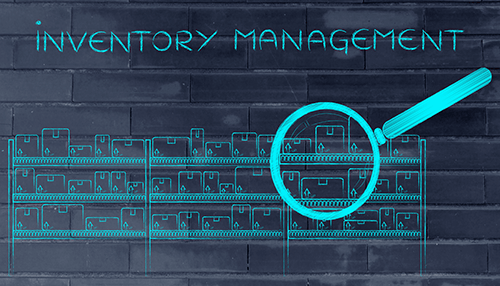Proper inventory management is essential to the success of any company, and without it, you’ll end up wasting time, losing money, and ruining your customer service. Therefore, this is a compromise you don’t want to make if you want your business to succeed. Your business becomes a lot more efficient when you properly handle your inventory problem, resulting in more revenue.
If you want to remain one step ahead of your rivals in the competitive marketplace, you must identify any inventory problems. Only once you’ve figured them out will you be able to develop appropriate solutions to retain your company’s competitive edge.
Without further ado, here’s an overview of the most common inventory management issues and how to solve them:
1. Limited Inventory Visibility
It’s critical to have a complete picture of your inventory levels at all times to avoid issues later on, such as stockouts and backorders. Without an exhaustive knowledge of your supply chain, managing your inventory becomes a huge challenge. This won’t be an issue if you have the Cribmaster Prolock or similar tools, as it gives you clear inventory visibility.
As a result, it’s easier to identify a few crucial details such as;
- The quantity and size of an order
- What’s currently in stock
- What products need to be replaced
- What’s about to be ordered
But achieving this is understandably challenging, more so if you’re tracking your inventory manually. To deal with this setback, you need to invest real-time inventory management system that guarantees to give you 100% accurate data on the location and availability of stock. With such a comprehensive and precise system, your customer’s experience will get to improve significantly.
2. Obsolete Stock
Items that have gone out of fashion once their product life cycle end are referred to as obsolete or dead stock. Such a scenario is usually brought about due to inaccurate forecasting. Having dead stock might also arise due to new regulations, meaning you’re left with products you can’t dispose of and instead end using up valuable space. The obsolete inventory also reduces your profit margins due to materials getting wasted and reduces your employees’ productivity as they’ll spend time moving them around.
The obsolete stock problem can be deal with by using a stock control system. With this application, you’ll be able to identify the dead inventory and know how best to use them wisely. This system also helps inventory managers know how best to have control of the stocks.
3. Inefficient Processes
For brick-and-mortar inventories, proper inventory management is an essential component, and without it, the whole retail inventory process is compromised. Inefficient inventory management has several downsides to your business, including;
- Errors in shipment
- Delays in order fulfillment
- Lost orders
- Misplaced products
- Increased storage costs
- Inaccurate labels and barcodes
These problems are usually brought about due to manual-based procedures. It also can happen if your company is employing the use of obsolete inventory management systems. These redundant processes increase the cost of labor and are more time-consuming, contributing to your company’s dismal performance.
To address inefficient inventory management processes, you should get an inventory management system enabled with IoT (Internet of Things). Thanks to this, it’ll be much easier to optimize the inventory process as you can get data in real-time, hence considerably improving your company’s overall efficiency.
4. Poor Communication
Miscommunication is one of the main things that can quickly make your company’s operations become inefficient. Because inventory management entails several components, there needs to be clear communication between all employees and departments across the entire company. It’s only with clear communication that the product lifecycle can guarantee accurate information.
The importance of clear communication can be best illustrated by showing the importance of ensuring all the products have the correct price labels. If there’s any miscommunication between the different departments, the items will have inaccurate price labels.
When this matter isn’t quickly addressed on time, the company’s sales and consequently profits will be affected. If the error is detected on time, rectifying it takes considerable time, reducing the overall productivity.
The best way to tackle the issue of miscommunication is by automating communication across the different departments. Thanks to the retail inventory automation software, it’s easier for company staff to share real-time details about the inventory.
If you are in the auto industry for example, there are many advanced inventory management software to manage your garage and warehouses. One unique concept was speciality built inventory management software for tire garages, you can check Tire Storage Solutions here.
Takeaway
The success of your business depends on how well you can effectively manage your inventory to ensure the punctual delivery of items to your customers. But you’re bound to experience some setbacks during inventory management as this entire process is frequently quite unnerving.
This article has sought to help you out on this matter by pinpointing the most common inventory management problems and their appropriate solutions. Once you put this in place, you’ll be on track to ensure your clients are at all times happy, further boosting your company’s growth.




